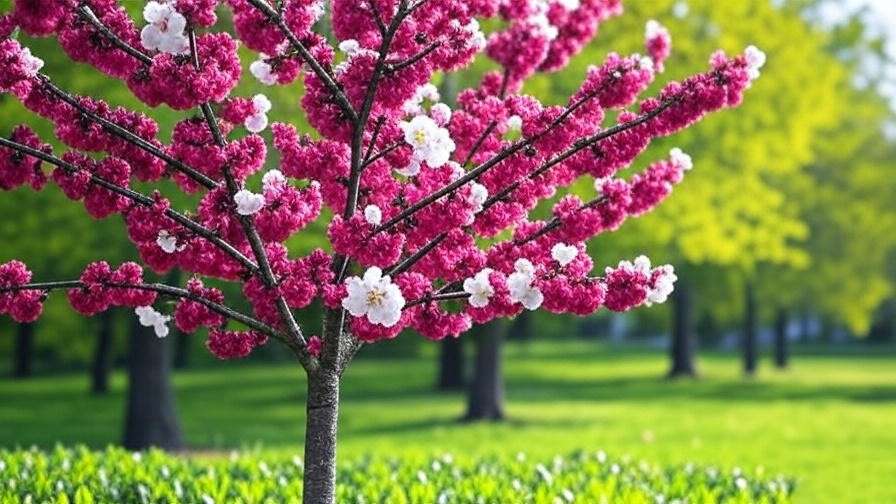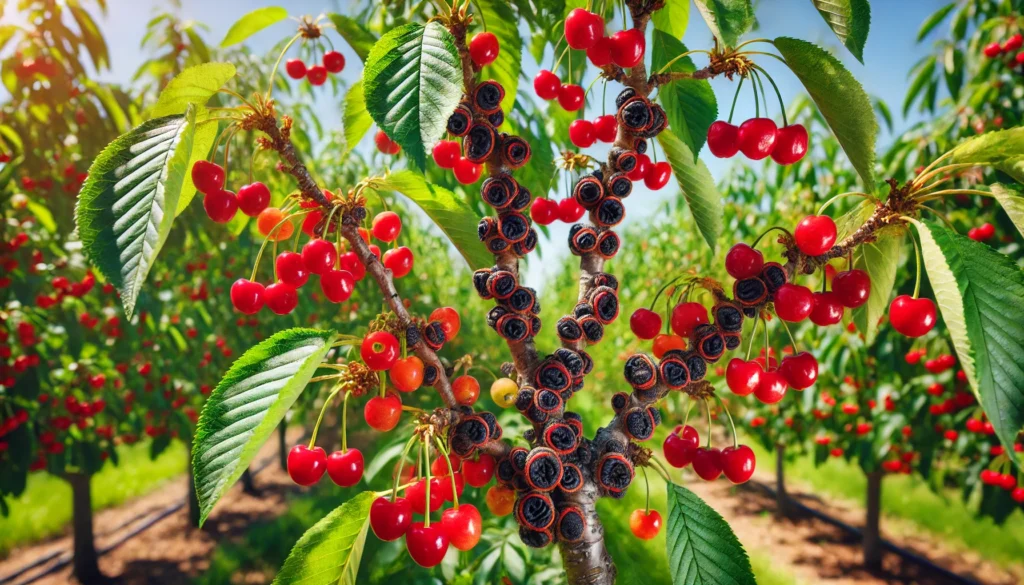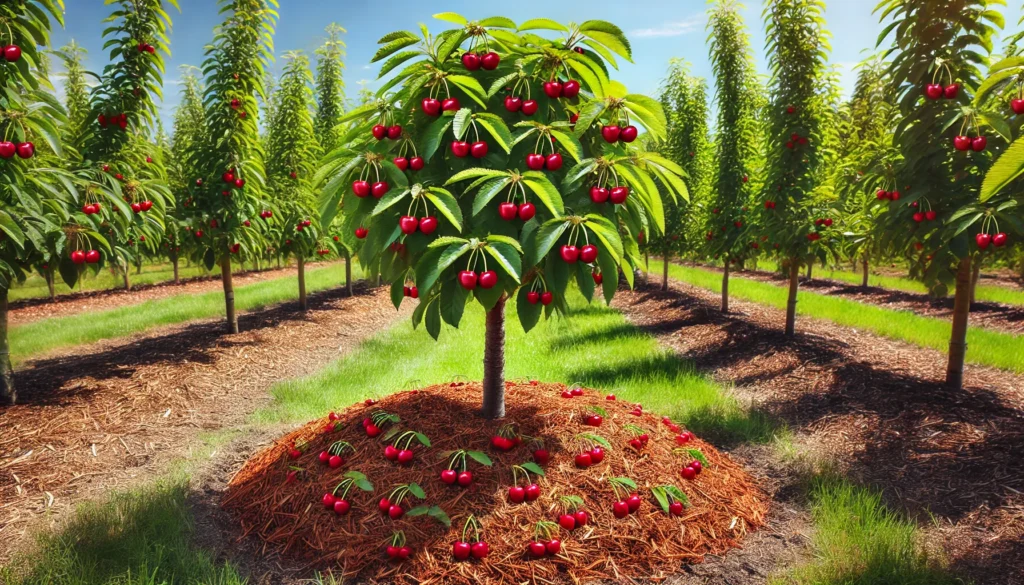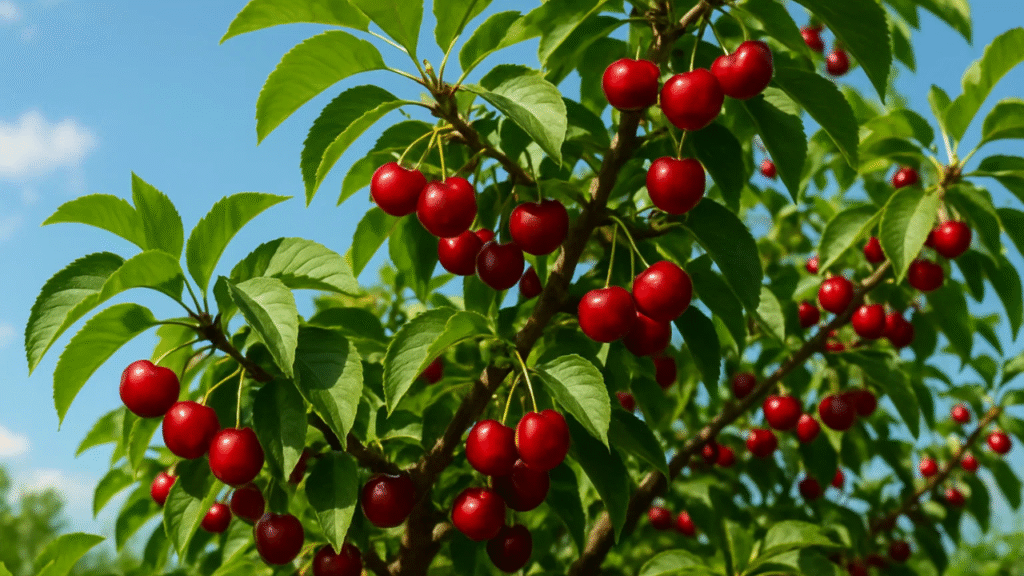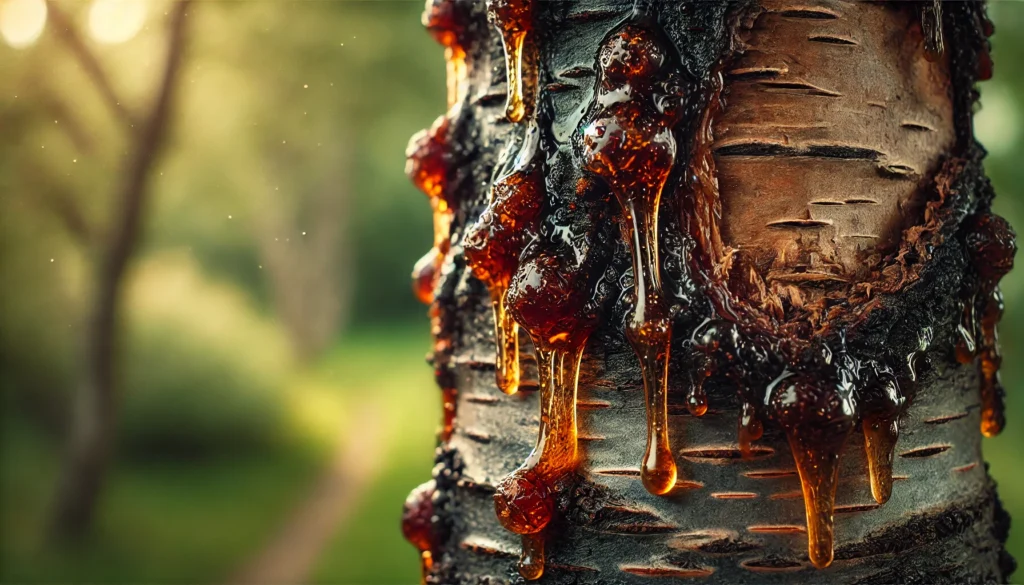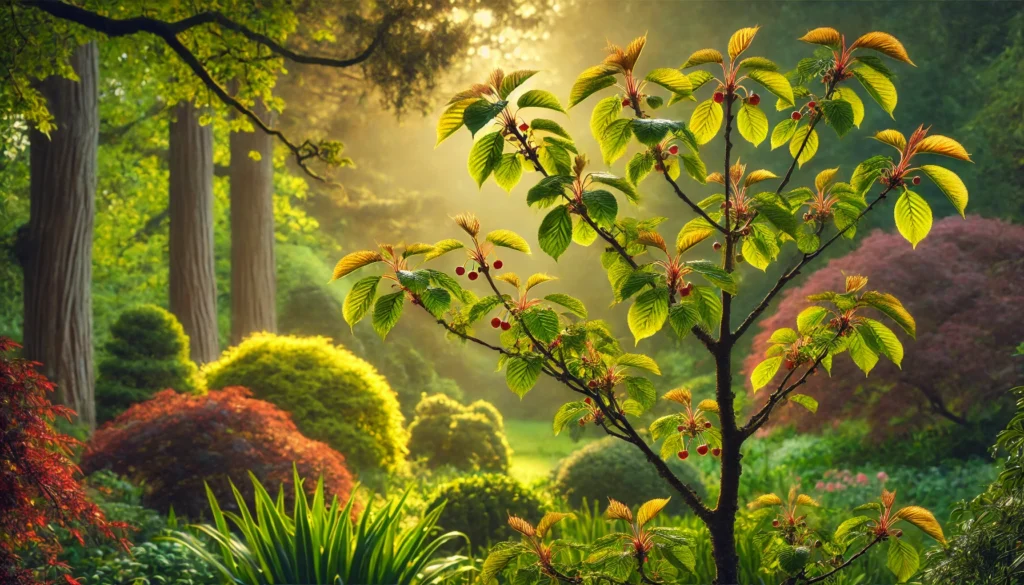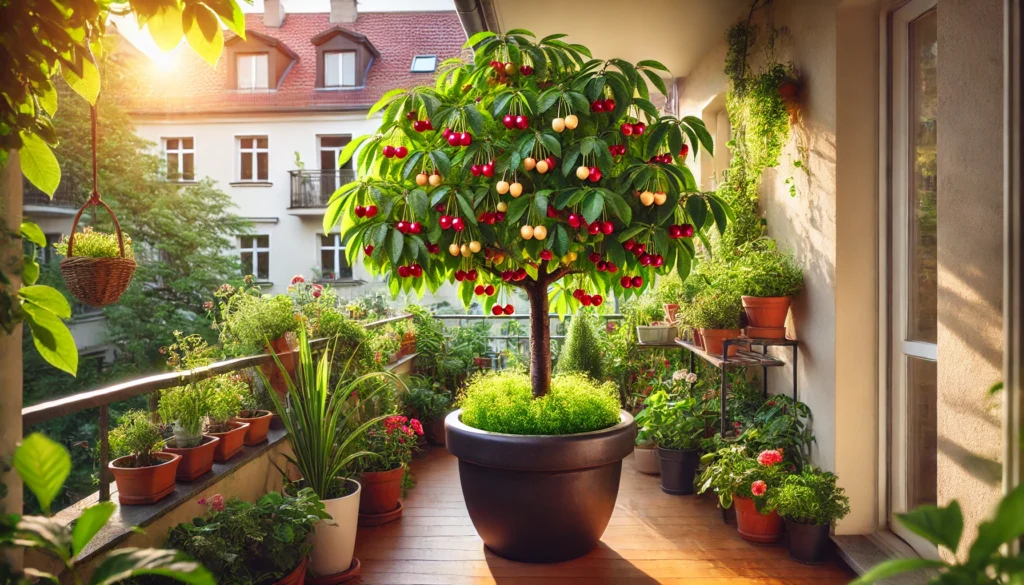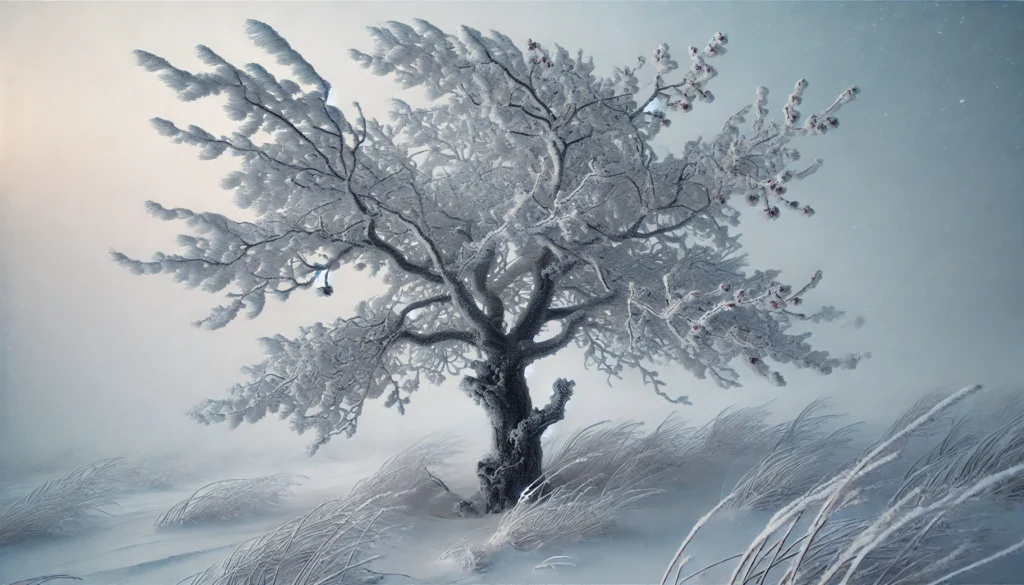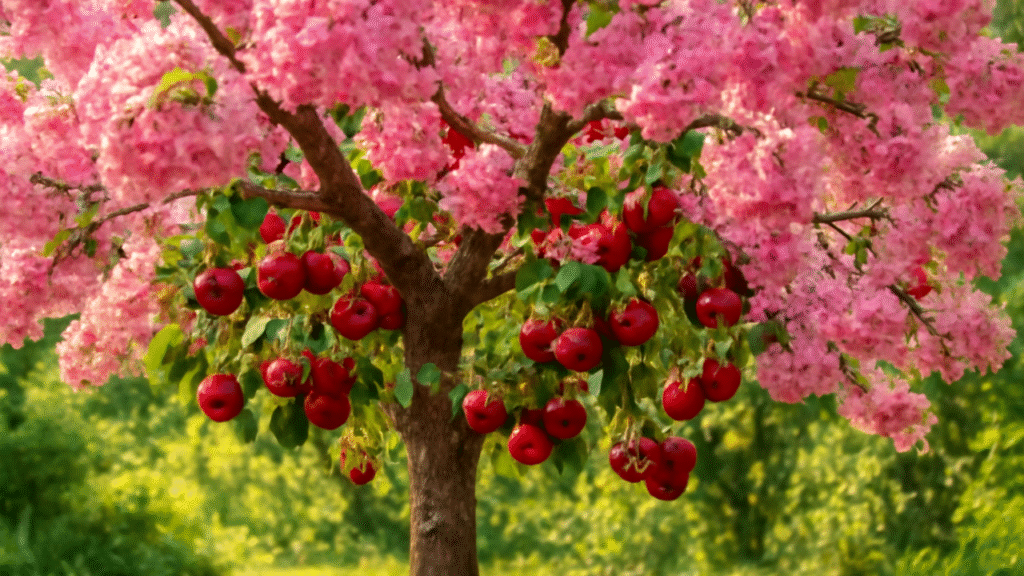Imagine a tree that transforms your yard into a vibrant masterpiece, with lush green leaves in spring morphing into a stunning purple-red spectacle by summer. The Canada Red Cherry Tree (Prunus virginiana ‘Canada Red’) does exactly that, captivating homeowners and gardeners with its bold foliage and low-maintenance charm. Whether you’re a beginner or a seasoned gardener, this ornamental chokecherry can elevate your landscape—if you know how to care for it properly. In this comprehensive guide, we’ll share expert-backed tips from arborists and horticulturists to help you plant, nurture, and maintain a thriving Canada Red Cherry Tree. From choosing the perfect spot to preventing common pests, this article covers everything you need for long-term success. Let’s dive in and unlock the secrets to growing this showstopper! 🌟
1. Understanding the Canada Red Cherry Tree 🌿
1.1 What Makes the Canada Red Cherry Tree Unique? ✨
The Canada Red Cherry Tree, a cultivar of the native chokecherry (Prunus virginiana), is prized for its dramatic foliage transformation. In spring, its leaves emerge bright green, gradually deepening to a rich purple-red by midsummer, creating a striking contrast in any garden. This deciduous tree also produces fragrant white blossoms in spring, followed by small, tart berries that attract birds and wildlife.
Unlike other ornamental trees, the Canada Red Cherry Tree combines aesthetic appeal with resilience, thriving in various climates and soil types. Its compact size—reaching 20–30 feet tall and 15–25 feet wide—makes it ideal for small yards, urban landscapes, or as a focal point in larger gardens.
Expert Insight: “The Canada Red Cherry Tree is a favorite among landscape designers for its year-round visual interest and adaptability,” says Dr. Emily Carter, a certified arborist with over 15 years of experience in ornamental tree care.
1.2 Ideal Growing Zones and Conditions 🌎
This tree flourishes in USDA Hardiness Zones 2–7, making it suitable for most of North America, from chilly northern regions to temperate southern climates. It prefers well-drained, loamy soil with a neutral to slightly acidic pH (6.0–7.0). While it tolerates clay or sandy soils, amending with organic matter like compost improves growth.
For optimal foliage color, plant in a location with full sun (at least 6 hours daily). Partial shade is acceptable, but reduced sunlight may dull the leaves’ vibrant hue. Avoid low-lying areas prone to waterlogging, as excessive moisture can harm the roots.
1.3 Why Choose a Canada Red Cherry Tree? 🌟
The Canada Red Cherry Tree offers unmatched benefits:
- Aesthetic Appeal: Its vivid foliage and spring blossoms create a stunning visual impact.
- Low Maintenance: Once established, it requires minimal care compared to other ornamental trees.
- Wildlife Friendly: Berries attract birds, while flowers support pollinators like bees.
- Versatility: Perfect for privacy screens, shade trees, or standalone specimens in landscapes.
This tree’s resilience and beauty make it a top choice for homeowners seeking to enhance their outdoor spaces without constant upkeep.
2. Planting Your Canada Red Cherry Tree 🌱
2.1 When and Where to Plant 📅
Timing is critical for successful planting. Early spring or fall is ideal, allowing roots to establish before extreme heat or cold. Choose a site with full sun and enough space to accommodate the tree’s mature size (20–30 feet tall, 15–25 feet wide). Ensure the location is free from overhead wires or nearby structures that could interfere with growth.
Avoid areas with poor drainage, as soggy soil can lead to root rot. If unsure about your soil’s drainage, perform a simple test: dig a 12-inch hole, fill it with water, and check if it drains within 24 hours.
2.2 Step-by-Step Planting Guide 🛠️
Follow these steps for a healthy start:
- Test and Prepare Soil: Conduct a soil test to check pH and nutrient levels. Amend with compost or organic matter if needed.
- Dig the Hole: Make it twice as wide and as deep as the root ball (typically 18–24 inches).
- Plant the Tree: Place the root ball in the hole, ensuring the top sits level with the ground. Backfill with soil, tamping gently to remove air pockets.
- Water Thoroughly: Soak the soil with 1–2 gallons of water to settle the roots.
- Mulch: Apply a 2–3 inch layer of organic mulch (e.g., wood chips or bark) around the base, keeping it 2 inches from the trunk to prevent rot.
- Stake if Needed: For young trees in windy areas, use stakes for stability during the first year.
Tip: Create a watering basin around the base to direct water to the roots during establishment.
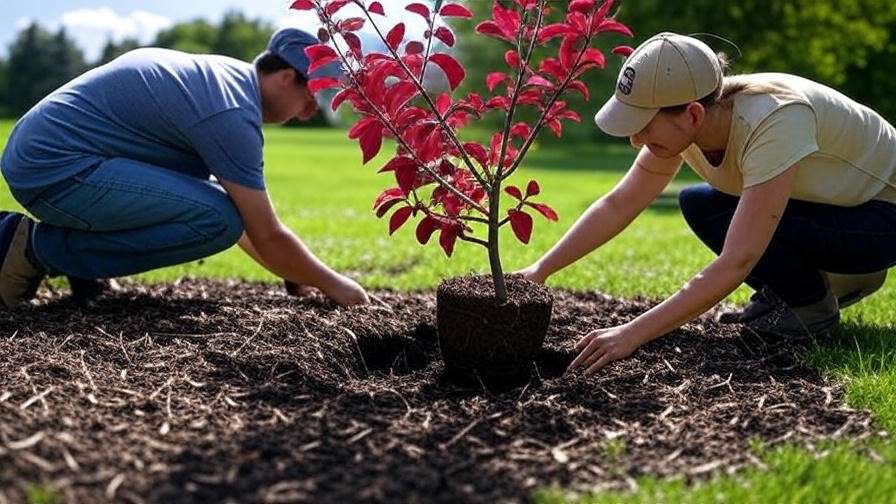
2.3 Common Planting Mistakes to Avoid 🚫
- Overwatering: Too much water can suffocate roots. Water deeply but infrequently.
- Planting Too Deep: Burying the root flare can stress the tree. Ensure the top of the root ball is level with the soil.
- Poor Site Selection: Avoid shaded or cramped areas that limit growth and foliage vibrancy.
Checklist for Beginners:
☑ Test soil pH and drainage.
☑ Choose a sunny, spacious location.
☑ Plant at the correct depth.
☑ Water and mulch properly after planting.
3. Essential Care Tips for a Thriving Canada Red Cherry Tree 🌳
3.1 Watering Needs 💧
Young Canada Red Cherry Trees need consistent moisture to establish roots. Water deeply (1–2 inches) once or twice weekly during the first year, especially in dry spells. Established trees are drought-tolerant but benefit from occasional deep watering during prolonged droughts.
Watch for signs of water stress:
- Underwatering: Wilting leaves or browning edges.
- Overwatering: Yellowing leaves or soft, mushy roots.
Expert Tip: “Invest in a moisture meter to monitor soil moisture accurately, especially for young trees,” advises Lisa Nguyen, a horticulturist specializing in ornamental trees.
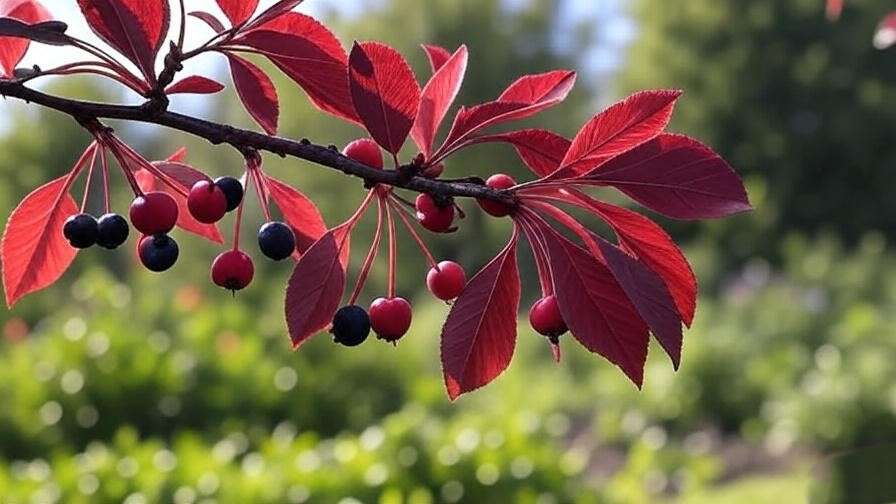
3.2 Fertilizing for Optimal Growth 🌾
Fertilize in early spring with a balanced NPK fertilizer (10-10-10) or organic compost to boost growth. Apply 1–2 pounds of fertilizer per tree, spreading it evenly under the canopy and watering thoroughly. A second light application in late summer can support late-season growth.
Avoid over-fertilizing, as excess nitrogen can cause weak, leggy growth or leaf burn. If your soil test shows high nutrient levels, skip fertilization for the season.
3.3 Pruning and Maintenance ✂️
Prune in late winter or early spring before buds form to maintain shape and health. Focus on:
- Removing dead, damaged, or crossing branches.
- Thinning the canopy to improve airflow and reduce disease risk.
- Shaping the tree for aesthetic balance.
Use clean, sharp pruning shears and make angled cuts just above a bud or branch collar. For larger branches, use a three-cut method to prevent bark tearing.
Example: To remove a dead branch, cut ¼ inch above the branch collar at a 45-degree angle, ensuring no stubs remain.
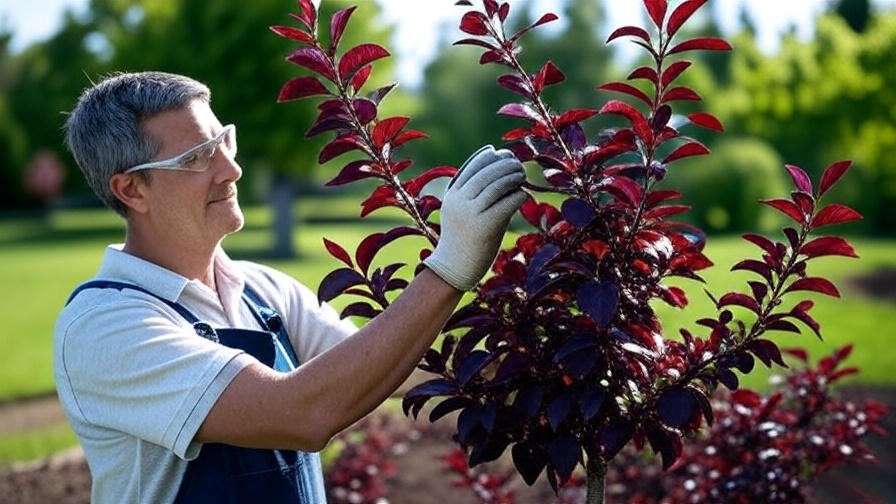
3.4 Mulching and Soil Care 🌱
Mulching conserves moisture, suppresses weeds, and regulates soil temperature. Apply a 2–3 inch layer of organic mulch (e.g., bark, wood chips, or straw) annually, keeping it away from the trunk to prevent rot.
Test soil every 2–3 years to monitor pH and nutrient levels. Add compost or organic matter to maintain soil health, especially in poor or compacted soils.
4. Protecting Your Canada Red Cherry Tree from Pests and Diseases 🐛
4.1 Common Pests to Watch For 🕷️
The Canada Red Cherry Tree is relatively pest-resistant but may face:
- Aphids: Small sap-sucking insects causing curled leaves. Control with neem oil or insecticidal soap.
- Tent Caterpillars: Defoliate branches by creating silken tents. Remove nests manually or use Bacillus thuringiensis (Bt).
- Spider Mites: Cause stippling on leaves. Spray with water or apply miticides for severe infestations.
Regular inspections, especially in spring, help catch infestations early.
4.2 Diseases and How to Prevent Them 🦠
Common diseases include:
- Black Knot: Fungal growths on branches. Prune affected areas 6 inches below knots and apply fungicides.
- Powdery Mildew: White coating on leaves. Improve airflow and use sulfur-based fungicides.
- Leaf Spot: Dark spots on leaves. Remove infected debris and avoid overhead watering.
Expert Insight: “Early detection is key to managing diseases like black knot,” says Dr. Mark Thompson, a plant pathologist. “Regular pruning and sanitation practices can prevent most issues.”

4.3 Winter Care and Protection ❄️
In colder zones, protect young trees from winter damage:
- Wrap trunks with tree guards to prevent sunscald and frost cracks.
- Apply extra mulch (4–6 inches) around the base to insulate roots.
- Use burlap screens in windy areas to shield young trees.
Check for winter damage in spring and prune any cracked or broken branches.
5. Enhancing Your Landscape with the Canada Red Cherry Tree 🌄
5.1 Companion Planting Ideas 🌼
The Canada Red Cherry Tree’s bold foliage pairs beautifully with companion plants that complement its aesthetic and support its health. Consider these options:
- Low-Growing Shrubs: Boxwood or dwarf spirea adds structure without competing for space.
- Perennials: Daylilies, hostas, or coneflowers provide colorful ground cover and contrast with the tree’s purple-red leaves.
- Groundcovers: Creeping thyme or vinca minor suppresses weeds and enhances soil moisture retention.
When planning your landscape, position companions at least 3–5 feet from the tree’s base to avoid root competition. Choose plants with similar sunlight and soil needs for a cohesive design.
Design Tip: Create a mixed border with the Canada Red Cherry Tree as the centerpiece, surrounded by perennials in complementary colors like yellow or white to highlight its vibrant foliage.
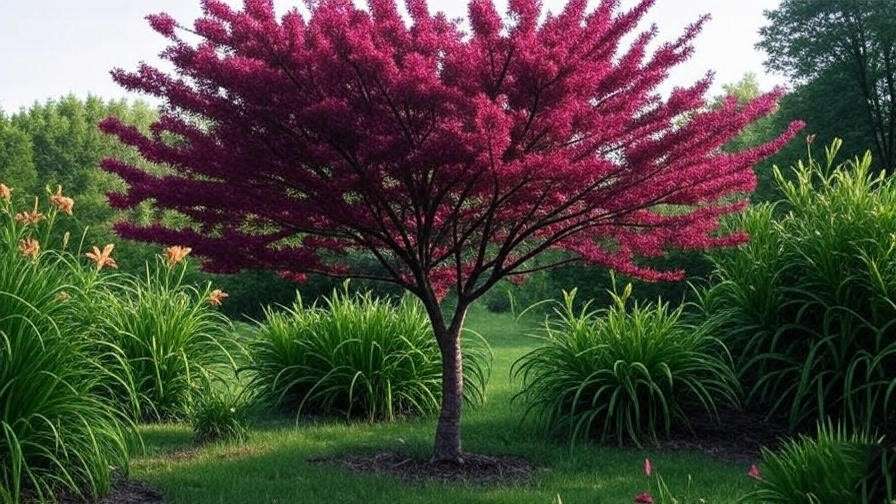
5.2 Seasonal Care Calendar 📆
A year-round care schedule ensures your tree thrives. Below is a month-by-month guide:
| Month | Care Tasks |
| January–February | Prune dead or damaged branches; inspect for winter damage; apply tree wraps for young trees. ❄️ |
| March–April | Fertilize with balanced NPK; begin regular watering for young trees; check for early pests. 🌱 |
| May–June | Monitor for aphids or tent caterpillars; mulch to retain moisture; enjoy spring blossoms. 🌸 |
| July–August | Water deeply during dry spells; apply light fertilizer; inspect for leaf spot or mildew. ☀️ |
| September–October | Rake fallen leaves to prevent disease; plant new trees; reduce watering as growth slows. 🍂 |
| November–December | Add extra mulch for winter protection; check stakes and wraps on young trees. 🥶 |
Example: A simple table like this can be printed and kept handy for quick reference, ensuring no care task is overlooked.
5.3 Using Berries and Foliage Creatively 🍒
The Canada Red Cherry Tree produces small, tart berries that ripen in late summer. While edible for humans when fully ripened, they are best used in processed forms due to their astringent taste. Here’s how to use them:
- Jams and Jellies: Cook berries with sugar and pectin for a tangy spread. Always remove pits and cook thoroughly to reduce astringency.
- Wildlife Attraction: Leave some berries on the tree to attract birds like robins and cedar waxwings.
- Safety Note: Berries are safe for humans when processed but can be toxic to pets or children if eaten raw in large quantities. Consult a local extension service for safe harvesting tips.
The tree’s foliage also enhances garden design. Its purple-red leaves create a stunning backdrop for spring bulbs or fall perennials, offering year-round visual interest.
6. Troubleshooting Common Issues 🛠️
6.1 Why Is My Canada Red Cherry Tree Not Thriving? 🤔
If your tree shows signs of stress, diagnose the issue promptly:
- Yellowing Leaves: Often caused by overwatering, poor drainage, or nutrient deficiencies. Test soil pH and adjust watering or add iron supplements if needed.
- Stunted Growth: May indicate compacted soil, insufficient sunlight, or root damage. Ensure the tree gets full sun and aerate soil if compacted.
- Sparse Foliage: Could result from pest infestations or fungal diseases. Inspect leaves and branches for signs of aphids or black knot.
Tip: Keep a garden journal to track symptoms, care routines, and environmental changes to identify patterns and solutions.
6.2 Addressing Environmental Stress 🌬️
The Canada Red Cherry Tree is hardy but can face challenges from extreme weather:
- Drought: Water deeply (2–3 inches) every 7–10 days during dry periods. Mulch heavily to retain moisture.
- Extreme Heat: Provide temporary shade for young trees using burlap or shade cloth during heatwaves.
- Heavy Winds: Stake young trees and install windbreaks (e.g., fences or shrubs) to reduce stress on branches.
Example: In a 2023 heatwave, gardeners in Zone 6 reported success protecting young Canada Red Cherry Trees by wrapping trunks and using drip irrigation to maintain consistent moisture.
6.3 When to Call a Professional 🌟
Some issues require expert intervention:
- Severe Disease: Black knot or extensive fungal infections may need professional fungicide application or branch removal.
- Structural Damage: Broken branches or leaning trees pose safety risks and require an arborist’s assessment.
- Persistent Pests: If organic controls fail, a certified pest management specialist can recommend targeted treatments.
Find a certified arborist through the International Society of Arboriculture (ISA) or your local cooperative extension service.
7. FAQs About Canada Red Cherry Tree Care ❓
- How fast does a Canada Red Cherry Tree grow?
It has a moderate growth rate, adding 1–2 feet per year under ideal conditions, reaching maturity in 10–15 years. - Are the berries safe to eat?
Yes, when fully ripened and processed (e.g., in jams). Raw berries are tart and may cause mild stomach upset if consumed in large amounts. Keep away from pets and children. - Can it grow in partial shade?
While it tolerates partial shade, full sun is essential for vibrant foliage color and optimal growth. - How do I prevent black knot disease?
Prune infected branches 6 inches below visible knots, sterilize tools between cuts, and apply fungicides in early spring if needed. - What’s the lifespan of a Canada Red Cherry Tree?
With proper care, it can live 20–40 years, providing decades of beauty and shade.
8. Conclusion: Growing a Stunning Canada Red Cherry Tree 🌳
The Canada Red Cherry Tree is a game-changer for any landscape, offering vibrant foliage, wildlife benefits, and low-maintenance charm. By following this guide—planting in the right spot, watering and fertilizing thoughtfully, pruning regularly, and monitoring for pests—you can ensure your tree thrives for years to come. Whether you’re enhancing a small backyard or designing a sprawling garden, this ornamental chokecherry delivers unmatched beauty and resilience.
Start your journey today by selecting a sunny site and preparing your soil. Have questions or tips to share? Drop them in the comments below or consult your local cooperative extension for personalized advice. For more tree care insights, explore our guides on ornamental gardening and pest management. Your Canada Red Cherry Tree is ready to shine—let’s make it happen! 🌟

